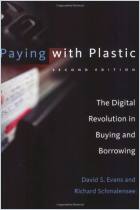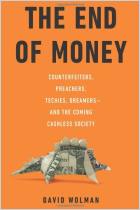Melden Sie sich bei getAbstract an, um die Zusammenfassung zu erhalten.

Melden Sie sich bei getAbstract an, um die Zusammenfassung zu erhalten.
Martin Neil Baily and Robert E. Litan
Moving Money
The Future of Consumer Payments
Brookings Institution Press, 2009
Was ist drin?
The film The Graduate was right. What keeps the US economy moving is still “plastic.”
Recommendation
People once used sheep and goats as money. Now they use plastic. Brookings Institution financial experts Robert E. Litan and Martin Neil Baily, along with a panel of top contributors, explain why the way people pay for things is important – and why the consumer payments industry is the essential “financial plumbing” of the US economy. Without a smoothly working payments system, all financial activity would come to a screeching halt. However, the ubiquitous credit-card magnetic stripe is as outdated as eight-track cartridges, and the US payments network is a Rube Goldberg contraption. By spotlighting these issues and more, the writers and editors of this text have developed an outstanding, though not particularly groundbreaking, guidebook to the consumer payments industry. getAbstract recommends their book to bankers, financiers and economists, along with anyone who is curious about what happens after he or she swipes a credit card at the register.
Summary
About the Authors
Robert E. Litan is the vice president for research and policy at the Kaufmann Foundation. Martin Neil Baily is former chairman of the US Council of Economic Advisers. Both are senior fellows at the Brookings Institution.
























Comment on this summary